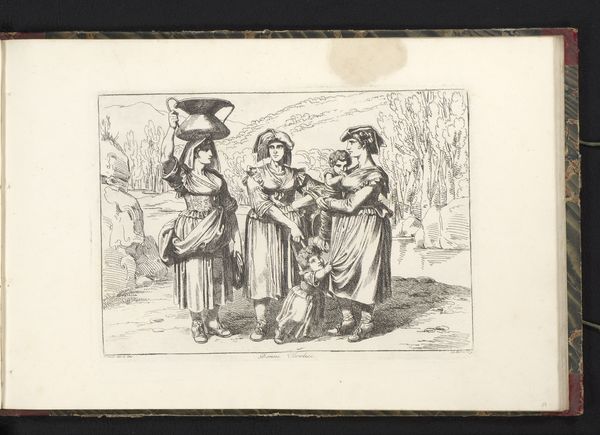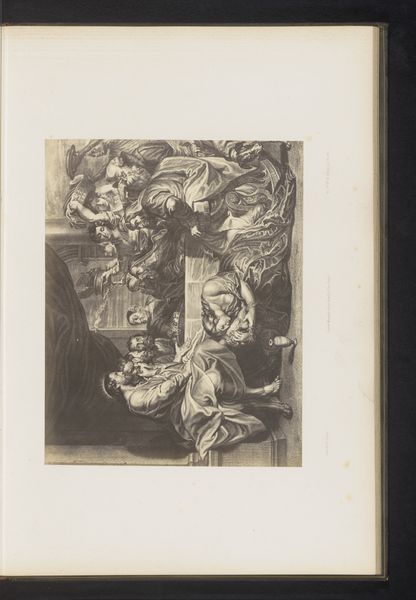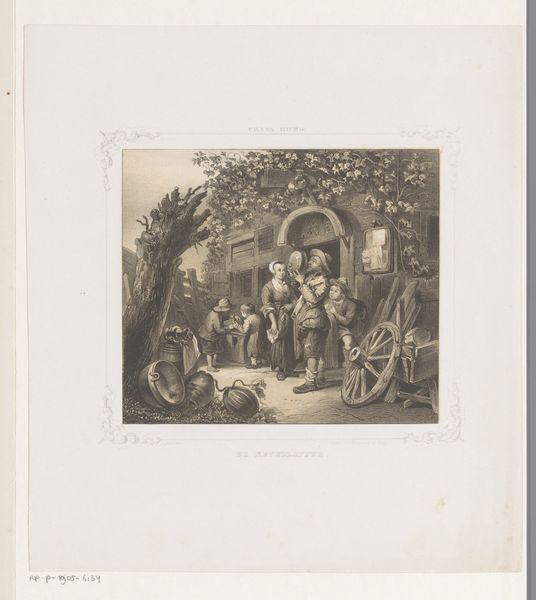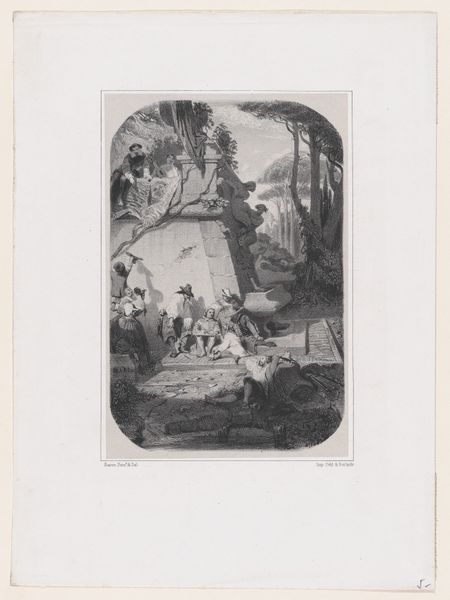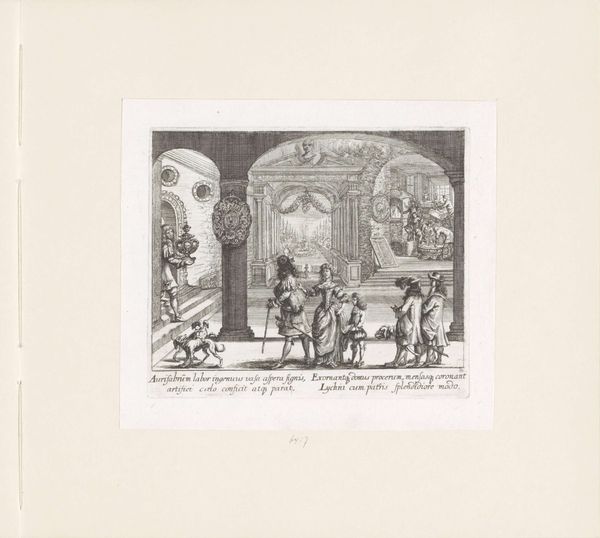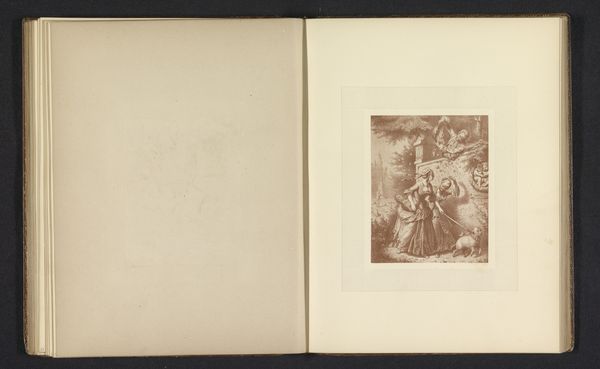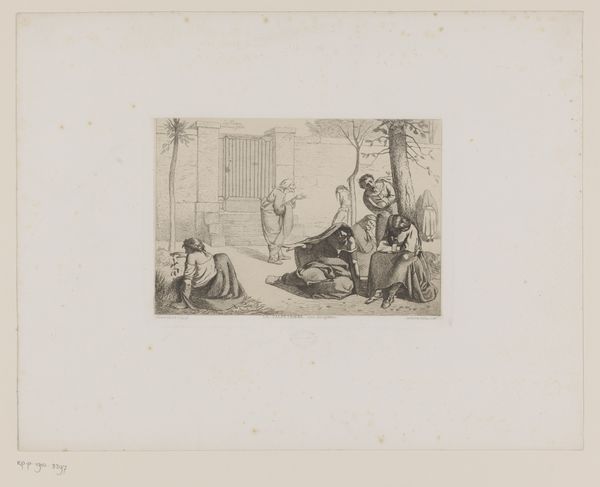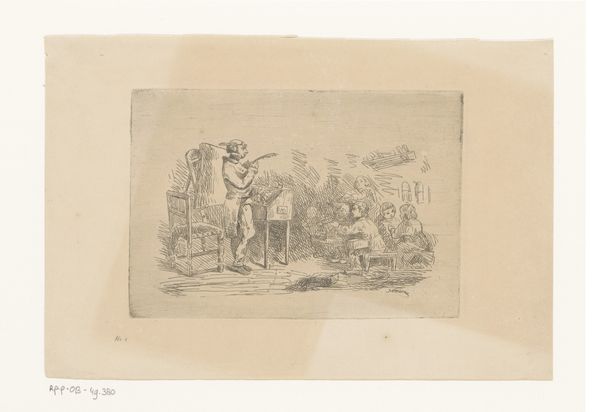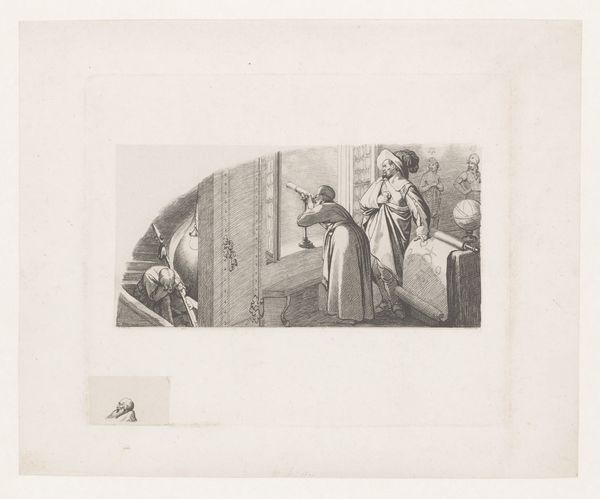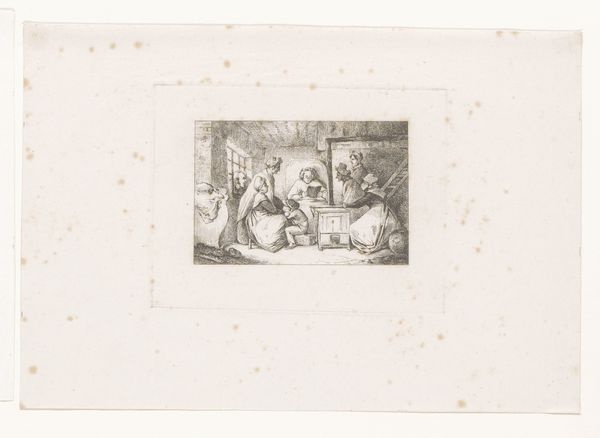
print, etching
#
medieval
#
narrative-art
# print
#
etching
#
old engraving style
#
figuration
#
linocut print
Dimensions: height 139 mm, width 203 mm
Copyright: Rijks Museum: Open Domain
Editor: This print, called "Lucas schildert Maria," from 1830, created by Karl Palzow using etching, possesses this old engraving style that I really like. How do you interpret this narrative artwork? Curator: I see this work not just as a religious scene, but also as a reflection on the role of art and artists in society, especially in the 19th century. This depiction presents Lucas, the patron saint of artists, painting the Virgin Mary, effectively linking artistic creation to divine inspiration and legitimizing art’s place within the religious and social structures of the time. What do you think Palzow was trying to say about the status of artists? Editor: That’s an interesting question! I guess, it suggests a kind of elevated status, aligning the artist’s work with something sacred. Curator: Exactly. It’s worth considering that 1830 was a time of great social and political upheaval. Romanticism pushed against Enlightenment rationalism. In that climate, imagery like this bolstered the importance of artistic expression as something divinely touched and separate from more "practical" endeavors. Editor: So, it’s not just about the biblical story itself, but about what the act of representing it meant then? Curator: Precisely! It is very much about power structures. This imagery reinforced who had access to them. How would you connect such depictions to a public's devotion in that period? Editor: Well, creating that link between the artist and something holy might make people more willing to value and support the arts and give credibility to their message, as a form of devotion. Curator: Right, and the museums and galleries where people viewed it amplified these notions of value. I appreciate how examining its historical moment deepens our understanding beyond the surface. Editor: I’m now understanding it in a whole new way! Thinking about the cultural implications makes it so much more than just a pretty picture.
Comments
No comments
Be the first to comment and join the conversation on the ultimate creative platform.
